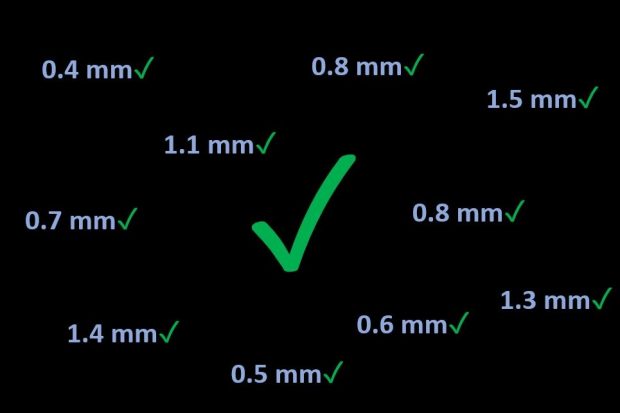
My name is Joe Lomax and I am a statistician at the Down’s syndrome screening Quality Assurance Support Service (DQASS). Public Health England (PHE) commissions DQASS to support the NHS fetal anomaly screening programme (FASP).
At DQASS, we receive frequent queries from sonographers asking about reporting nuchal translucency (NT) measurements of less than 1.0 mm. We want to tell you that these measurements are valid and it is okay to report them.
One of the aims of the NHS FASP is to make sure we have consistency of practice. Although the impact of measurements of NT less than 1.0 mm being ‘rounded up’ and reported as 1.0 mm is negligible, achieving consistency is important.
NT measurements
NT measurements are used in the combined test to calculate chance results for Down’s syndrome and/or Edwards’ syndrome and Patau’s syndrome. Larger NT measurements can be associated with a higher chance result. Using the most accurate measurement gives the most accurate result. The NHS FASP recommends that NT should be:
- measured 3 times and the maximum measurement that meets the criteria should be recorded
- reported to one decimal point
- reported accurately even if less than 1.0 mm
For example, an NT measurement of 0.9 mm is valid and should be reported as it is measured.
An example
If an NT measurement of 0.7 mm is reported as 1.0 mm, the measurement used in the chance calculation is larger than the actual NT that is measured. There are many factors that influence the screening result the woman receives and using an accurate NT measurement is one such factor.

In this example CRL/NT distribution plot, there appears to be a collection of points with an NT measurement of 1.0 mm (this is sometimes called NT truncation).
What we did
We looked at the DQASS data and we noted that some ultrasound departments or individual sonographers reported higher proportions of 1.0 mm measurements than expected. We provided targeted support to these ultrasound departments and discussed this issue with the screening support sonographers (SSS) at update days in 2019.
Since the update days, we have seen less reporting of measurements to 1.0 mm. By raising the issue to DQASS and working together, we are achieving more consistency in reporting accurate NT measurements.
What you can do
Screening support sonographers (SSSs) should discuss the information in this blog with ultrasound practitioners in their departments.
As in the graph above, a good way to check for possible truncation of NT measurements is to draw a horizontal line across the plot where the NT is equal to 1.0 mm. If you see a cluster of NT measurements along this line and no measurements below, there may be truncation of measurements at 1.0 mm.
PHE Screening blog
The PHE Screening blog provides up to date news from all NHS screening programmes. You can register to receive updates direct to your inbox, so there’s no need to keep checking for new blogs. If you have any questions about this blog article, or about population screening in England, please contact the PHE screening helpdesk.